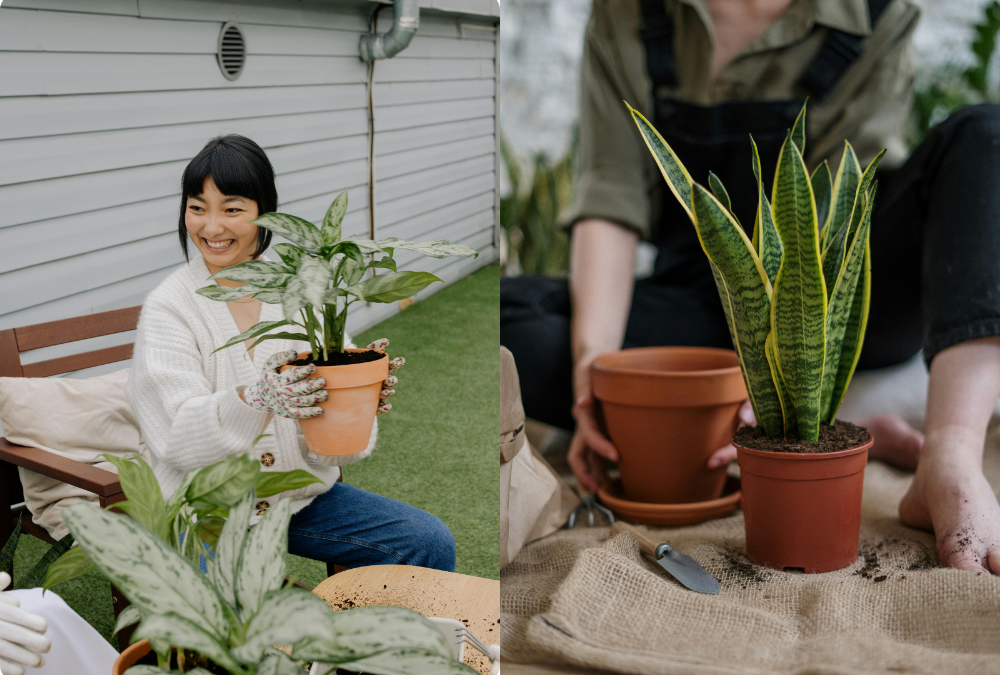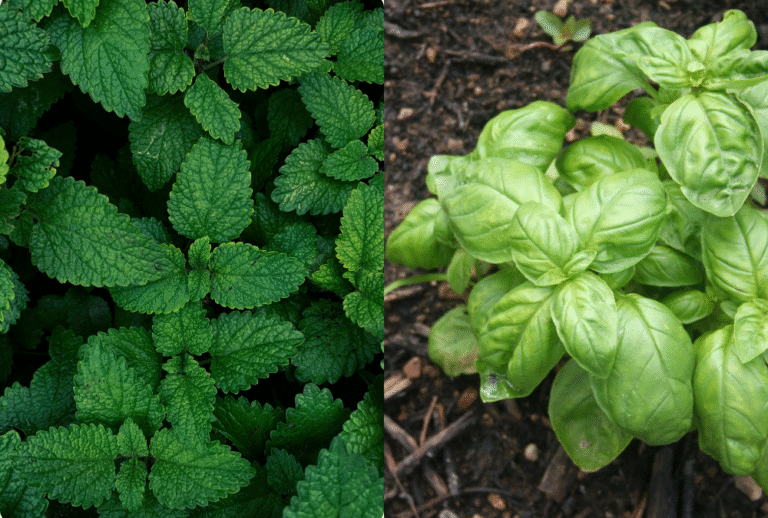11 Best Indoor Plants for Low Light Rooms
Want to make your home green but don’t get much sunlight? Don’t worry, there are many indoor plants that grow well in low light. These plants are easy to care for and can make dark corners look fresh and cozy.
In this article, we’ll share the 11 best indoor plants for low light rooms. From leafy favorites like snake plants and pothos to air-purifying choices like peace lilies, these plants will brighten your space without needing much sun.
Perfect for bedrooms, offices, or apartments, these plants bring life and beauty even in shady spots.
1. Snake Plant (Sansevieria)
Snake Plant, also known as “Mother-in-Law’s Tongue,” is one of the most forgiving indoor plants you can grow. Its tall, sword-shaped leaves with green and yellow stripes make a bold statement in any room. The best part? It thrives in low light and only needs water every few weeks.
- Why it works in low light: Snake Plant can survive in shade and dim corners. It even tolerates neglect.
- Extra perk: It filters toxins from the air and gives fresh oxygen, especially at night.
- Care tip: Let the soil dry completely before watering to avoid root rot.
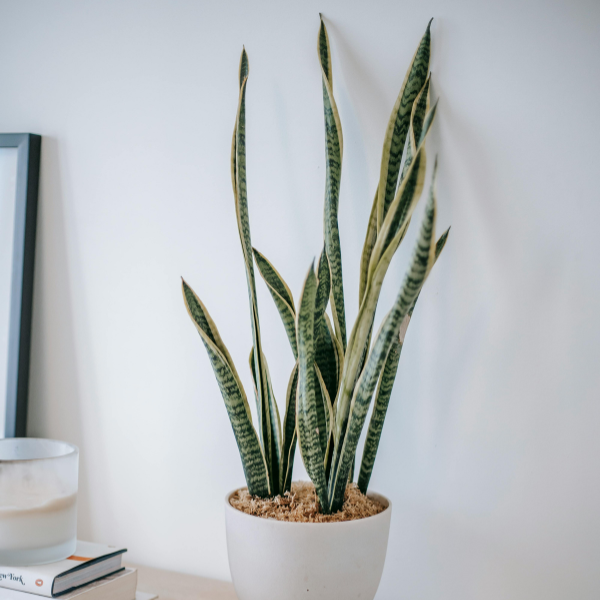
2. ZZ Plant (Zamioculcas zamiifolia)
The ZZ Plant has shiny, waxy green leaves that look almost unreal. It is known as one of the toughest houseplants you’ll ever meet. This plant can handle low light, irregular watering, and even a bit of forgetfulness.
- Why it works in low light: It naturally grows in shady forests, so it adapts well indoors.
- Extra perk: It adds a glossy, modern touch to any space.
- Care tip: Water lightly once the soil feels dry. Too much water is the only danger for this plant.
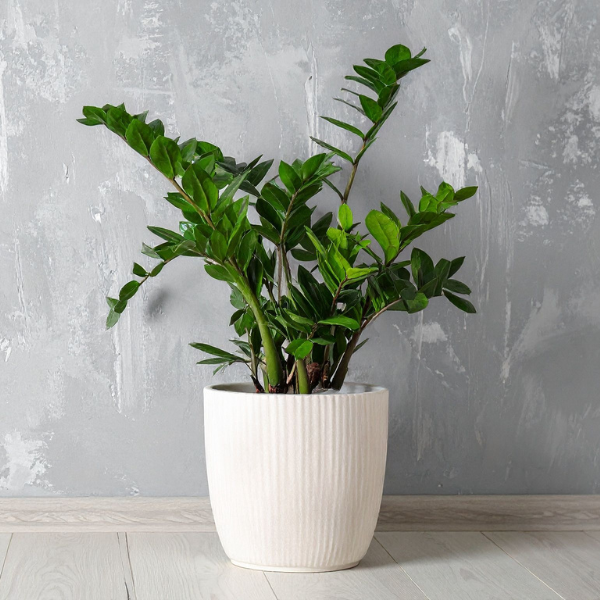
3. Pothos (Epipremnum aureum)
Known as “Devil’s Ivy,” Pothos is loved for its fast-growing vines and heart-shaped leaves. It’s one of the most versatile indoor plants.
- Origin: Native to Southeast Asia and the Pacific Islands.
- Why it works in low light: It grows even in dim corners and adapts to different light levels.
- Extra perk: Very easy to propagate, simply cut and root in water.
- Care tips:
- Let soil dry slightly between watering.
- Trim long vines to keep them tidy.
- Use a moss pole if you want it to climb.
- Style idea: Hang in a basket near a shelf or let it trail from a bookcase.
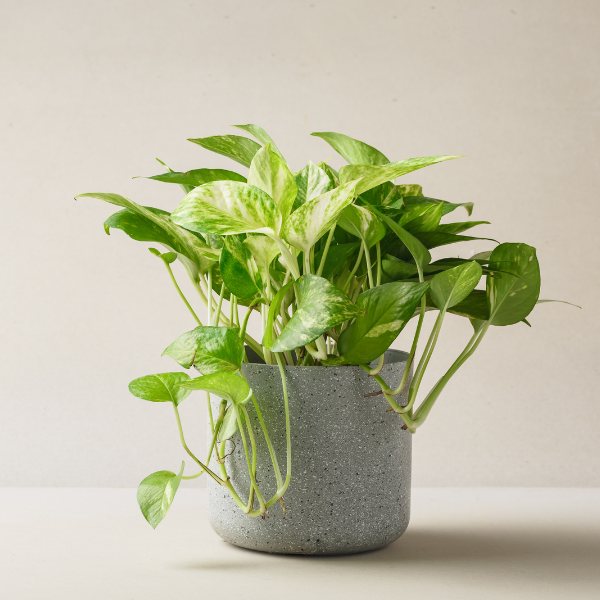
4. Peace Lily (Spathiphyllum)
The Peace Lily is elegant and calming with its glossy leaves and white blooms. It thrives in shade but still manages to flower indoors.
- Origin: Tropical rainforests of Central and South America.
- Why it works in low light: Adapted to shady understories of forests.
- Extra perk: Improves indoor air quality while adding a spa-like feel.
- Care tips:
- Keep soil slightly moist.
- Mist leaves occasionally for humidity.
- Watch for drooping leaves, they signal it’s thirsty.
- Style idea: Works beautifully as a centerpiece on dining or coffee tables.
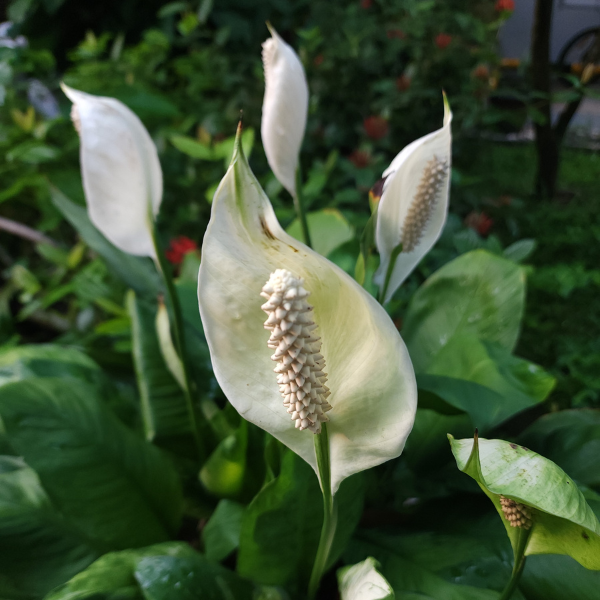
5. Cast Iron Plant (Aspidistra elatior)
The name says it all: Cast Iron Plant is nearly indestructible. With deep green, lance-shaped leaves, it brings elegance to low light corners.
- Why it works in low light: It’s famous for surviving in shade where other plants struggle.
- Extra perk: Resistant to neglect, dust, and even temperature changes.
- Care tip: Wipe the leaves occasionally to keep them shiny and dust-free.
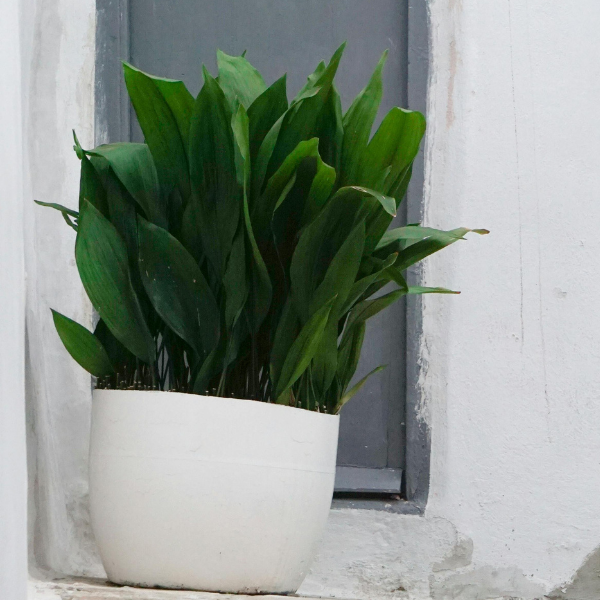
6. Chinese Evergreen (Aglaonema)
Chinese Evergreen is a favorite for offices and homes because of its beautiful patterned leaves. They come in shades of green, silver, and even pink.
- Why it works in low light: This plant loves shade and adapts well to artificial lighting.
- Extra perk: Adds color variety without needing sunshine.
- Care tip: Avoid overwatering. It likes slightly moist soil but not soggy roots.
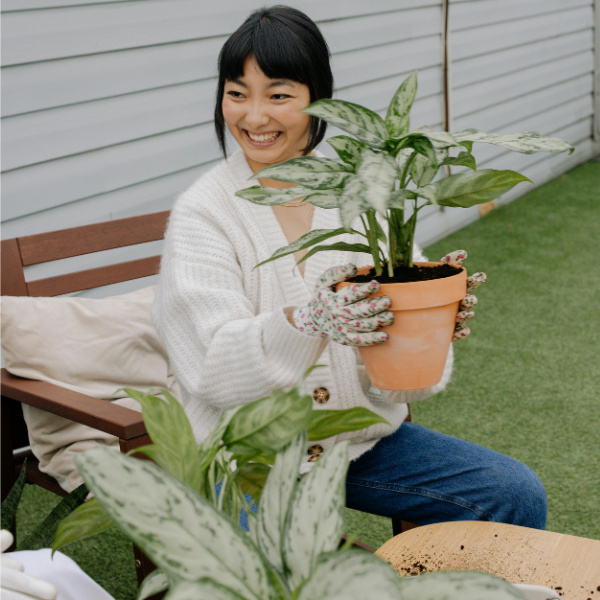
7. Dracaena
Dracaena plants are tall and slim, making them great for filling empty corners. Their striped leaves add a modern feel.
- Origin: Africa and Asia.
- Why it works in low light: Slow-growing in shade but remains healthy.
- Extra perk: Some varieties can grow over 6 feet indoors.
- Care tips:
- Use filtered or distilled water.
- Water moderately, letting soil dry between watering.
- Prune to control height.
- Style idea: Place in floor planters for a dramatic effect in living rooms.
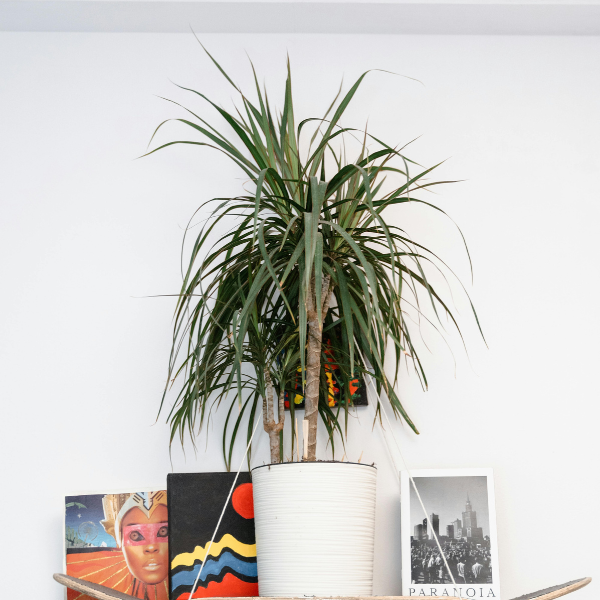
8. Parlor Palm (Chamaedorea elegans)
Parlor Palm is soft and tropical-looking, yet perfectly suited to shady rooms. It’s safe for pets too.
- Origin: Central America.
- Why it works in low light: Grows naturally under dense tree cover.
- Extra perk: Adds a touch of the tropics indoors.
- Care tips:
- Mist leaves if the air is dry.
- Keep soil lightly moist.
- Trim yellowing fronds to encourage fresh growth.
- Style idea: Ideal for bathrooms and bedrooms for a relaxing vibe.
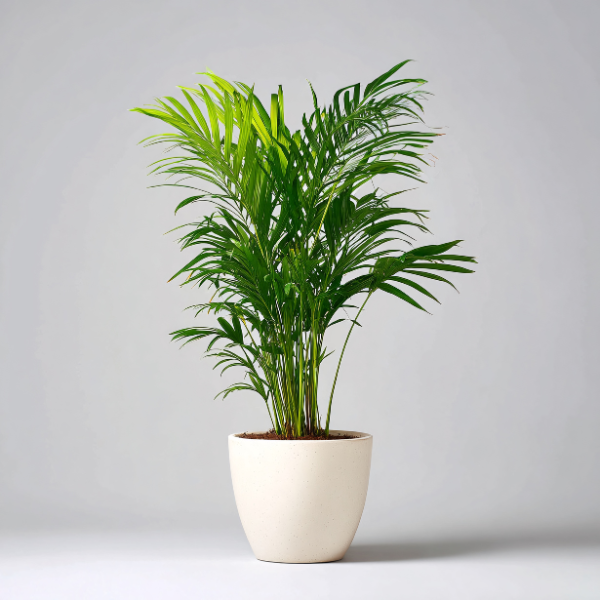
9. Philodendron
Philodendrons are classic houseplants with heart-shaped leaves that trail or climb. They’re very adaptable and bloom in low light conditions.
- Why it works in low light: Grows well in shaded corners and even under artificial light.
- Extra perk: Easy to train as a hanging or climbing plant.
- Care tip: Allow soil to dry slightly between waterings. Overwatering is the most common mistake.
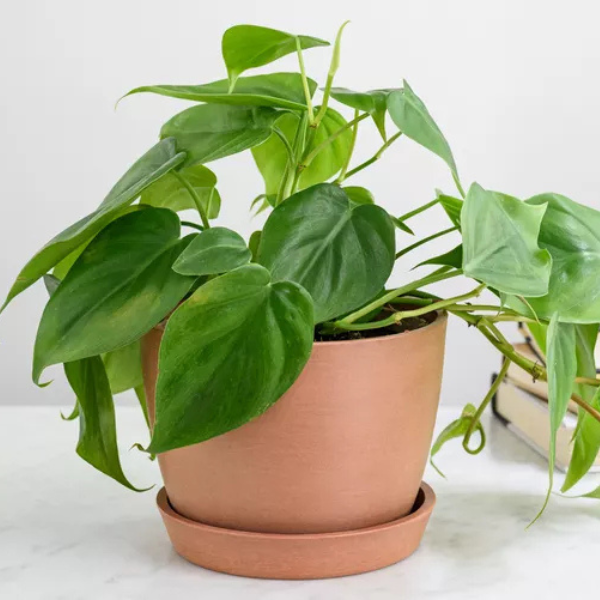
10. Lucky Bamboo (Dracaena sanderiana)
Despite its name, Lucky Bamboo isn’t true bamboo. It’s actually related to the Dracaena family. Often grown in water or soil, it’s believed to bring good luck and positive energy.
- Why it works in low light: Grows happily in shaded rooms with artificial lighting.
- Extra perk: Can be styled in decorative glass containers for a modern look.
- Care tip: Change water every two weeks if growing in water. Use filtered water if possible.
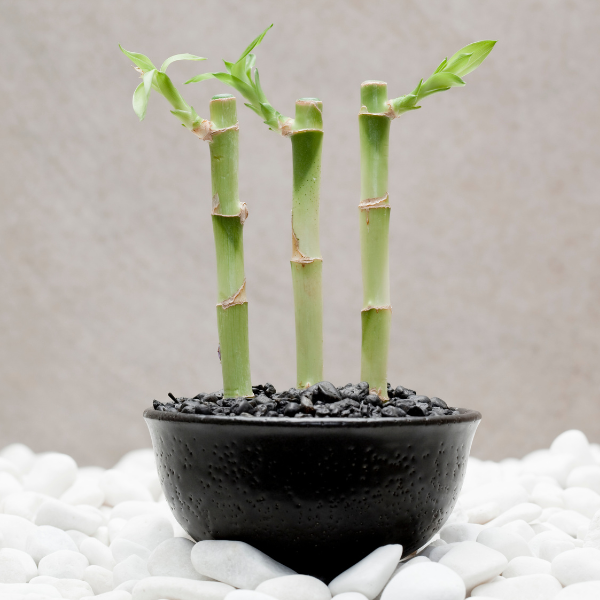
11. Spider Plant (Chlorophytum comosum)
Spider Plant is cheerful and playful with its striped leaves and dangling baby plants.
- Origin: Southern Africa.
- Why it works in low light: Adapts well to shade and indirect lighting.
- Extra perk: Produces “pups” you can share with friends.
- Care tips:
- Water moderately, letting soil dry slightly between waterings.
- Repot when roots become crowded.
- Trim brown tips for a fresh look.
- Style idea: Hang in a macrame planter or let pups cascade from a shelf.
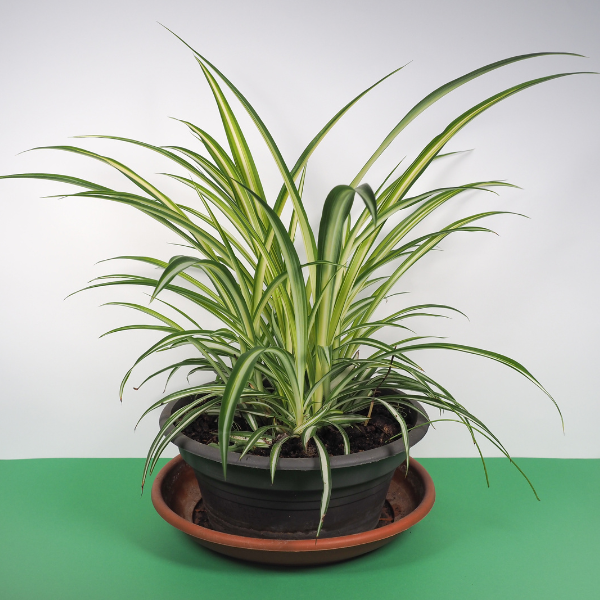
| Plant Name | Light Needs | Watering Needs | Pet-Friendly | Special Features |
|---|---|---|---|---|
| Snake Plant | Low to medium | Every 2 – 3 weeks | No | Air purifier, upright leaves |
| ZZ Plant | Low to medium | Every 2 – 3 weeks | No | Glossy leaves, very tough |
| Pothos | Low to bright | Weekly (when soil dries) | No | Fast vines, easy to propagate |
| Peace Lily | Low to medium | Weekly, keep slightly moist | No | White flowers, air purifying |
| Cast Iron Plant | Very low to medium | Every 2 – 3 weeks | Yes | Hardy, elegant leaves |
| Chinese Evergreen | Low to medium | Weekly, light watering | No | Colorful patterned leaves |
| Dracaena | Low to medium | Weekly, avoid tap water | No | Slim, striped leaves |
| Parlor Palm | Low to medium | Weekly, keep soil moist | Yes | Tropical look, pet safe |
| Philodendron | Low to medium | Weekly (when topsoil dries) | No | Heart-shaped trailing leaves |
| Lucky Bamboo | Low to medium | Change water every 2 weeks | Yes | Can grow in water, good luck charm |
| Spider Plant | Low to medium | Weekly, light watering | Yes | Produces baby spiderettes |
Extra Tips for Success with Low Light Plants
- Rotate pots: Helps plants grow evenly toward light.
- Supplement light: Use LED grow lights if rooms are very dark.
- Mind humidity: Bathrooms and kitchens often suit tropical plants.
- Group plants: Creates a mini-jungle effect and helps maintain moisture.
Benefits of Keeping Indoor Plants in Low Light Rooms
Indoor plants don’t just look pretty. They bring a range of health and lifestyle benefits:
- Air purification: NASA studies show that plants like Peace Lily and Snake Plant absorb toxins.
- Stress relief: Greenery lowers stress, anxiety, and even improves focus.
- Better sleep: Plants that release oxygen at night (like Snake Plant) can improve bedroom air.
- Mood booster: Even in dim rooms, plants bring life and warmth to the space.
- Low upkeep: Many low light plants don’t need daily watering or pruning, making them perfect for busy lifestyles.
Read More: Best Colors for a Relaxing Bedroom
How to Choose the Right Low Light Plant
Choosing the right low light plant depends on both your space and your lifestyle. If your room is very dark, plants like Snake Plant, ZZ Plant, or the Cast Iron Plant are the best choices. These tough varieties can handle low light and even a bit of neglect, so they’re perfect for beginners.
For bathrooms, you’ll want plants that enjoy extra humidity. Peace Lily and Parlor Palm both thrive in moist air, making them great companions for shower spaces or steamy corners. If you’re looking for something for your office desk, Lucky Bamboo and ZZ Plant are reliable picks. They can handle artificial lighting and don’t need much care, which makes them ideal for workspaces.
Pet owners should always think about safety first. Non-toxic plants like Spider Plant, Cast Iron Plant, and Parlor Palm are gentle options that won’t harm curious cats or dogs. And if your main goal is decoration, you can’t go wrong with trailing plants like Pothos and Philodendron. Their cascading vines look stunning on shelves, side tables, or hanging baskets, adding instant charm to any room.
Best Rooms for Low Light Plants
Wondering where to place them? Here’s a quick breakdown:
- Living Room: Snake Plant, Chinese Evergreen, Dracaena.
- Bedroom: Peace Lily, Snake Plant, Spider Plant.
- Bathroom: Parlor Palm, Pothos, Peace Lily.
- Office/Study: ZZ Plant, Lucky Bamboo, Pothos.
- Hallways/Entryways: Cast Iron Plant, Snake Plant.
Do Low Light Plants Need Fertilizer?
Yes, but not much. Because they grow slower in shade, they don’t need heavy feeding.
- Use a balanced liquid fertilizer once every 2–3 months.
- Stop fertilizing in winter when growth slows.
- Always water before fertilizing to protect roots.
Artificial Lighting for Low Light Plants
Some rooms don’t get any natural light at all. In that case, plants will need a little extra help. Artificial lights can work like sunshine and keep them healthy.
LED grow lights are a great choice. They don’t use much power, last a long time, and are perfect for small apartments or dark corners. Fluorescent bulbs are another good option, especially for tiny plants that sit on desks or shelves.
When using lights, placement matters. Keep the bulb about 6–12 inches above the plant so the leaves don’t get burned. Also, try to copy the natural day cycle. Most plants do best when they get light for about 10 to 12 hours each day.
With the right setup, even a windowless room can have green, happy plants.
Where to Buy Low Light Indoor Plants
If you’re ready to shop, here are the best options:
- Local nurseries: Often have healthy plants acclimated to your region.
- Online plant shops: Many ship right to your door with care instructions.
- Supermarkets: Some stock common plants like Snake Plant and Pothos.
- Plant swaps: Check local community groups, you might even get free cuttings.
FAQs About Low Light Plants
1. Can plants grow in a completely dark room?
Not without artificial light. All plants need some form of light to survive.
2. Which low light plant is best for beginners?
Snake Plant and ZZ Plant are perfect starters since they are nearly indestructible.
3. What low light plants are safe for cats and dogs?
Parlor Palm, Cast Iron Plant, Spider Plant, and Lucky Bamboo are non-toxic.
4. How often should I water low light plants?
Most need water only when the topsoil is dry. Overwatering is the biggest risk.
Low light rooms don’t have to stay empty or lifeless. The right plants from Snake Plants to Spider Plants, can bloom in shady spaces while making your home feel fresh and cozy.
These 11 plants are all beginner-friendly, affordable, and beautiful. You can grow them in bedrooms, offices, or even bathrooms. With just a little care, they’ll reward you with healthy leaves, cleaner air, and a calming atmosphere.
Now it’s your turn. Which of these plants would you like to bring home first? Drop a comment below and share this list with a friend who loves greenery but thinks their space is too dark.
Read More: How to Remove Wall Stains Without Removing Paint, How to Get Rid of Kitchen Ants Naturally

